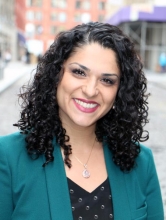Black, Latine, and Indigenous children are disproportionately represented in Residential Treatment Centers (RTCs) in the United States and make up about 70% of the RTC population. Proponents of residential treatment suggest that youth of color are likely to be referred to RTCs given the greater structural barriers that limit their access to mental health services, despite similar overall rates of mental health challenges as compared to their white peers. Once placed in RTCs, however, the type or efficacy of treatment youth receive is largely unknown.
In their study, “A Treatment-To-Prison-Pipeline? Scoping Review and Multimethod Examination of Legal Consequences of Residential Treatment Among Adolescents,” co-authors Dr. Shabnam Javdani; McKenzie N. Berezin, counseling doctoral student; and Dr. Keisha April, former NYU provostial post-doc, examine the role and function of RTCs in creating or exacerbating race and gender inequities under the guise of mental health. They examine patterns that implicate the logic that treatment intentions justify children’s confinement and expose evidence linking RTCs with a potential treatment-to-prison pipeline.
They use a two-study design to understand both the scope of the potential treatment-to-prison pipeline as well as the processes that undergird or sustain it. In study 1, the authors conduct a scoping review of literature to investigate the legal consequences of RTC placement. Study 2 uses a multimethod examination of one large mixed-geographic county to examine which youth are formally charged with a crime while in RTCs and the circumstances of the charges, by race and gender.
They find evidence for a potential treatment-to-prison pipeline through which youth in RTCs incur new arrests and are charged with crimes during and following treatment. Through RTCs – which represent a broad umbrella of settings and facilities encompassed within congregate care – youth can be confined without an arrest or allegation of a crime. Once confined, children can and are likely to be charged with a legal offense. This pattern is stronger for Black and Latine youth and especially girls, for whom use of physical restraint and boundary violations are recurring challenges. Furthermore, they argue that masking confinement via the alliance between mental health and juvenile legal systems is an example of structural racism that must be addressed through public advocacy for Black, Latine, and Indigenous children.
Learn more about Dr. Javdani’s work and the work of the RISE Lab by visiting their website. Stay up to date by following the RISE Lab and Dr. Javdani on Twitter.
The article can be cited as follows:
Javdani, S., Berezin, M. N., & April, K. (2023). A Treatment-To-Prison-Pipeline? Scoping Review and Multimethod Examination of Legal Consequences of Residential Treatment Among Adolescents. Journal of Clinical Child & Adolescent Psychology, 1-20. DOI: 10.1080/15374416.2023.2178003




